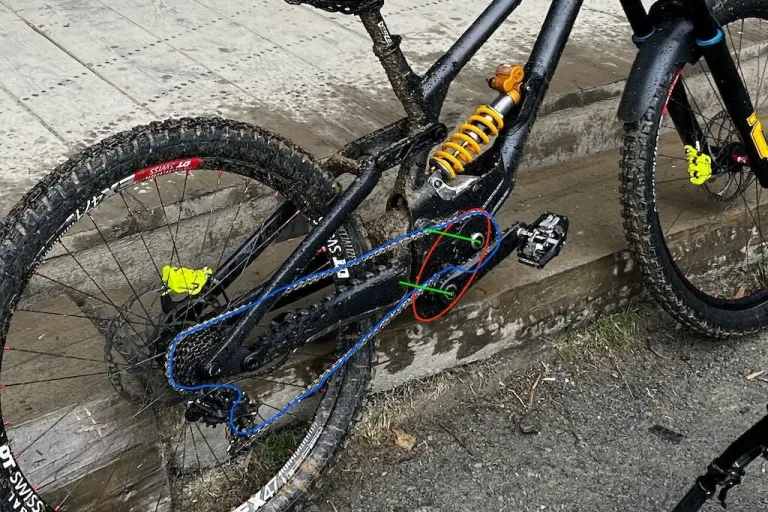Spotted a New Specialized Demo...and the Rebirth of the Enduro.
First of all, there’s a noticeable feature that immediately stands out—the brakes are mounted backwards -ha-. This isn’t just a minor detail; it suggests that this bike could very well be one that Jordan Williams is currently testing. Jordan, has been linked to specialized testing projects before.
This particular bike might be connected to Specialized’s decision to start from scratch with their new Enduro project. From what we've heard, Specialized was unhappy with the kinematics and behavior of their earlier prototype. In mountain bikes, especially in the Enduro category, suspension kinematics are key to how the bike handles obstacles, climbs, and descends. If the bike isn’t behaving as expected—whether in terms of pedal efficiency, bottoming out, or overall handling—it makes sense that the team would scrap the design and go back to the drawing board.
The fact that they’re willing to rethink their entire approach suggests they’re aiming for something more advanced and finely tuned. Specialized likely wants to build a bike that not only performs at the highest levels but also has long-term reliability and satisfaction for riders. It's clear that Specialized is looking to make a significant impact with their next generation of bikes.

It's hard to be certain from this angle, but it seems to me that the main pivot—where the chainstay part of the swingarm connects to the front triangle—appears to be positioned higher than on the other prototypes we've seen in racing. This could result in a slightly more rearward axle path than their previous design, potentially explaining the unusual chain path that we’re observing.
Instead of using a small idler wheel above and in front of the chainring, like we’ve seen on high-pivot bikes to manage chain growth, Specialized has opted for a different approach. They've separated the drivetrain into two distinct sections, a design concept similar to Pivot´s Phoenix .
It looks like the secondary chain—possibly using cogs or even a belt—is positioned behind the large, CNC-machined shock basement. This secondary drivetrain appears to be connected to the crank spindle and the shaft that the forward-mounted chainring rotates on. A small cog is positioned outside the frame on the crank spindle, likely to assist with chain tension. The key difference with this setup compared to traditional high-pivot designs (like those from Forbidden) is that this small cog would experience less tension, making it less stressed than a standard idler-equipped high-pivot bike.

As for the suspension design, it looks like this prototype uses an FSR (Future Shock Rear) setup, based on the upper rocker link and the dropout pivot. This could allow braking forces to be somewhat decoupled from the suspension forces, which is a desirable trait for maintaining suspension performance under braking. The shock actuation is likely similar to Crosswork's linkage-driven design, though Crosswork uses a single pivot, not a full suspension design.
Finally, in terms of frame construction, the front triangle appears to use the same combination of carbon tubing and CNC aluminum lugs that we've seen in other Specialized prototypes, which suggests a strong, lightweight build typical of their high-performance designs.